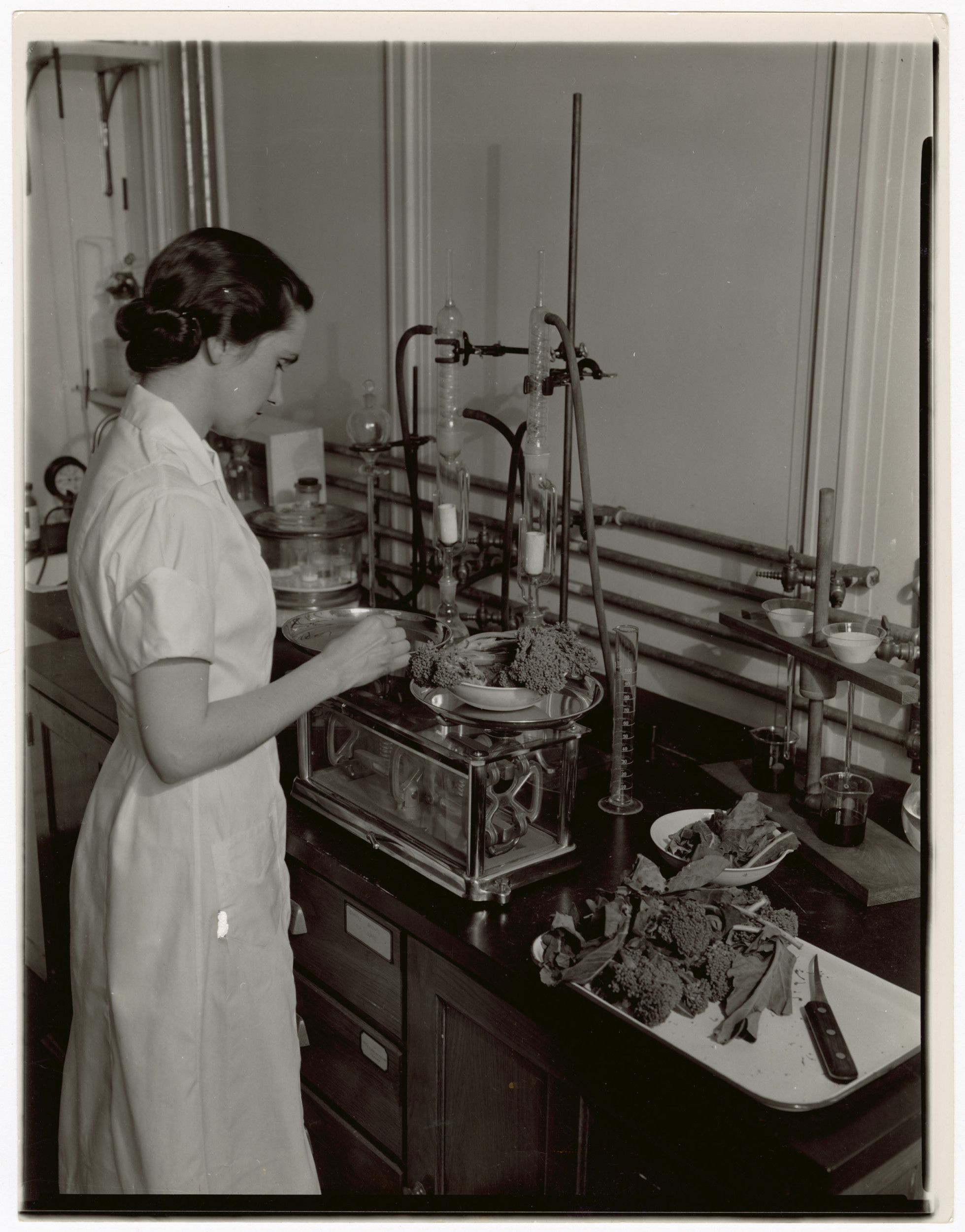Woman Measuring Broccoli
Add to Favorites:
Add all page(s) of this document to activity:

The serious scientific approach to home economics is evidenced in this photo. Wearing her lab whites, this nutritionist weighs broccoli for a study.
In the 1890s, Wilbur Olin Atwater pioneered the quantification of food into fat, protein, carbohydrates, and calories. He conducted the first federally funded research in nutrition, as the Special Agent in Charge of Nutrition Investigation in the Office of Experiment Stations.
Atwater and his team used a respiration calorimeter to measure the heat produced and the metabolic rate of individuals performing different activities like reading, ironing, and riding a stationary bicycle. They used the data to calculate how many calories a person needed to consume.
This cutting-edge technology cost over $10,000 annually to operate in the 1890s. And it marked a turning point in how Americans thought about food. His findings were translated for the public in 1916 by home economics specialists. By then, food was no longer just food, but it had new meaning and new numbers attached to it.
In the 1890s, Wilbur Olin Atwater pioneered the quantification of food into fat, protein, carbohydrates, and calories. He conducted the first federally funded research in nutrition, as the Special Agent in Charge of Nutrition Investigation in the Office of Experiment Stations.
Atwater and his team used a respiration calorimeter to measure the heat produced and the metabolic rate of individuals performing different activities like reading, ironing, and riding a stationary bicycle. They used the data to calculate how many calories a person needed to consume.
This cutting-edge technology cost over $10,000 annually to operate in the 1890s. And it marked a turning point in how Americans thought about food. His findings were translated for the public in 1916 by home economics specialists. By then, food was no longer just food, but it had new meaning and new numbers attached to it.
This primary source comes from the Records of the Bureau of Human Nutrition and Home Economics.
National Archives Identifier: 5729287
Full Citation: Photograph 176-HE-33321-C; Woman Measuring Broccoli; Photographs of Nutrition Investigations, 1904 - 1939; Records of the Bureau of Human Nutrition and Home Economics, Record Group 176; National Archives at College Park, College Park, MD. [Online Version, https://docsteach.org/documents/document/woman-measuring-broccoli, April 25, 2024]Rights: Public Domain, Free of Known Copyright Restrictions. Learn more on our privacy and legal page.



